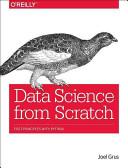
Building on SugarCRM
In the crowded field of customer relationship management (CRM) systems, SugarCRM stands out—not only for its modular design, but also for the ease with which you can develop, customize, and extend your CRM applications. This concise book provides a thorough overview of the development tools and APIs available in SugarCRM 6.2, showing both developers and nondevelopers alike how to use them to build a sample application step-by-step. You'll learn how to bend and twist SugarCRM’s extensible MVC framework to create custom applications, including solutions for automating your business that go beyond traditional CRMs. Learn how SugarCRM modules interact with one another through data relationships Build your CRM application with SugarCRM’s GUI developer tools—without touching code Use built-in design templates with Module Builder to design new CRM modules Customize modules with the Studio tool to add new fields or additional relationships between modules Automate common and tedious tasks within your application, using custom PHP code with SugarCRM's powerful API Integrate external applications into your CRM solution through SugarCRM's web services API
- ISBN 13 : 1449312985
- ISBN 10 : 9781449312985
- Judul : Building on SugarCRM
- Pengarang : John Mertic,
- Kategori : Computers
- Penerbit : "O'Reilly Media, Inc."
- Bahasa : en
- Tahun : 2011
- Halaman : 80
- Halaman : 80
- Google Book : http://books.google.co.id/books?id=GTCxlKp-sEcC&dq=inpublisher:O'Reilly&hl=&source=gbs_api
-
Ketersediaan :
This concise book provides a thorough overview of the development tools and APIs available in SugarCRM 6.2, showing both developers and nondevelopers alike how to use them to build a sample application step-by-step.









